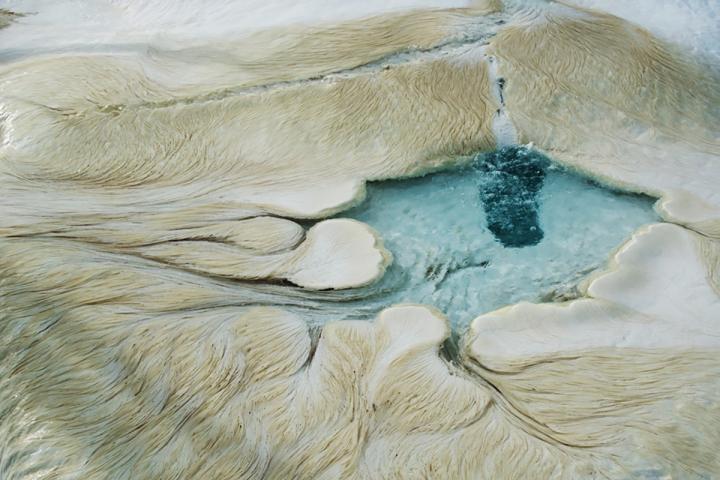
CAPTION New research reveals that the bacterium Sulfurihydrogenibium yellowstonense thrives in harsh environments with conditions like those expected on Mars. Credit: Photo by Tom Murphy
University of Illinois at Urbana-Champaign researchers are one step closer to understanding how life could potentially survive on Mars.
The researcher team found that bacterium called Sulfurihydrogenibium yellowstonense or Sulfuri for short, controls the formation of ancient rock on Earth that looks like pasta and thrives in harsh environments that are similar to what is found on the Red Planet.
According to University of Illinois geology professor Bruce Fouke, who led the new, NASA-funded study, the bacterium is part of a lineage that has evolved prior to the oxygenation of Earth approximately 2.35 billion years ago and can survive in extremely hot, fast-flowing water bubbling up from underground hot springs.
The researchers were able to collect samples of the bacteria from Mammoth Hot Springs in Yellowstone National Park using sterilized forks and analyze the microbial genomes to evaluate which genes were being actively translated into proteins. They also deciphered the organism’s metabolic needs and looked at its rock building capabilities.
After the study, they found that proteins on the bacterial surface accelerate to the rate at which travertine—a calcium carbonate (CaCO3)—crystallizes in and around the cables one billion times faster than in any other natural environment on Earth, resulting in the deposition of broad swaths of hardened rock with an undulating, filamentous texture.
“This should be an easy form of fossilized life for a rover to detect on other planets,” Fouke said in a statement. “If we see the deposition of this kind of extensive filamentous rock on other planets, we would know it’s a fingerprint of life. It’s big and it’s unique. No other rocks look like this. It would be definitive evidence of the presences of alien microbes.”
In past studies, researchers have found an extensive quantitative baseline of the physical, chemical, and biological conditions in which Sulfuri-dominated filamentous microbial mats rapidly grow and simultaneously become encrusted to form travertine streamers.
Sulfuri can withstand exposure to ultraviolet light, while surviving only in environments with extremely low oxygen levels using sulfur and carbon dioxide as replacements for oxygen as energy sources.
“Taken together, these traits make it a prime candidate for colonizing Mars and other planets,” Fouke said.
The bacteria also catalyzed the formation of crystalline rock for formations that appear to look like layers of pasta noodles, which is likely because the bacteria will latch onto one another in fast flowing water, keeping other microbes from attaching and oozes a slippery mucus to defend itself.
“They form tightly wound cables that wave like a flag that is fixed on one end,” he said.
The unique shape of the bacteria make them a relatively easy form of life to find on other planets using a rover or other techniques.
“These Sulfuri cables look amazingly like fettuccine pasta, while further downstream they look more like capellini pasta,” Fouke said.
The study was published in Astrobiology.




